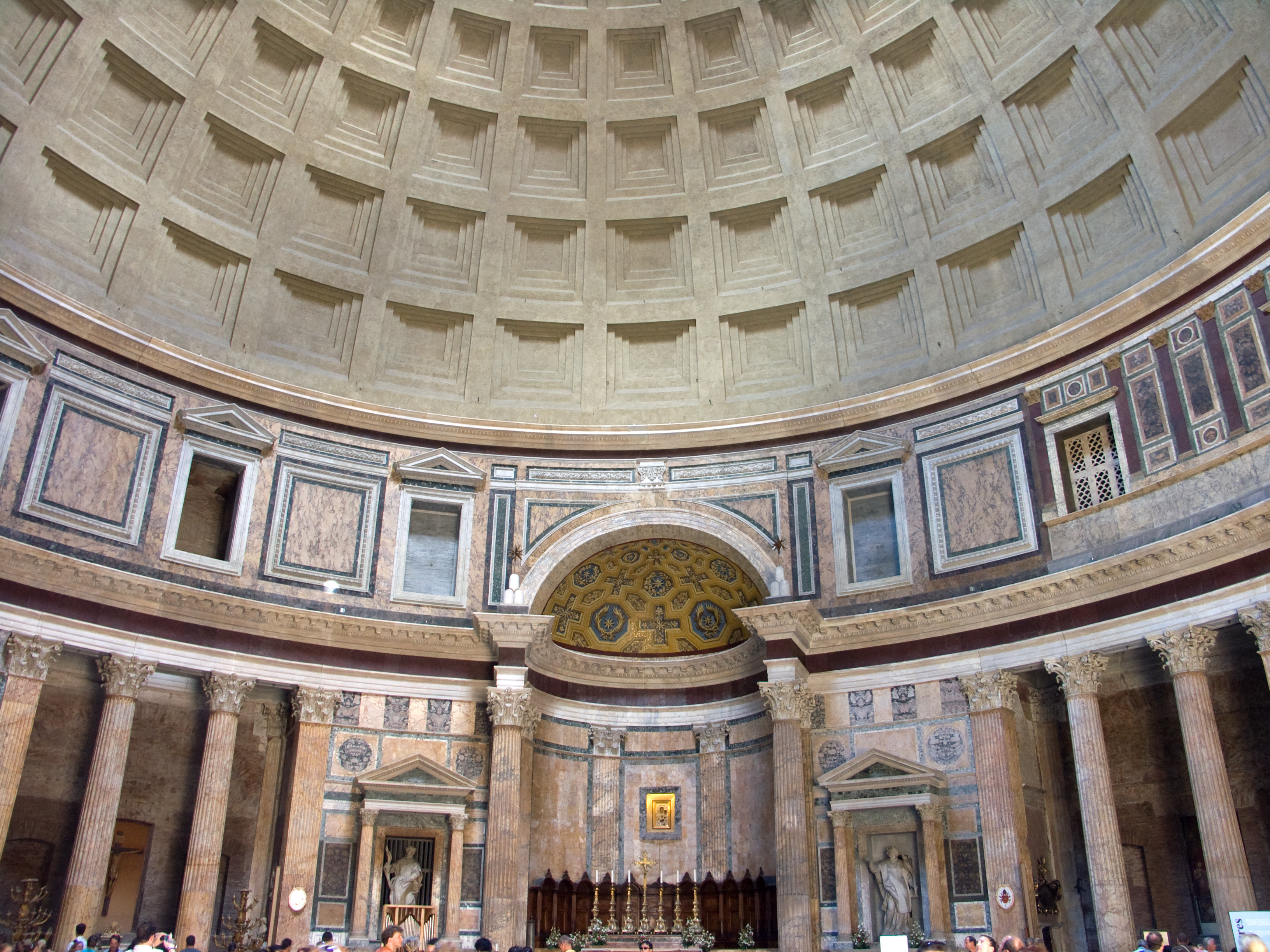4.12.19 Man-made Stone
By now you’re probably saying, “There can’t be any more connections between the Roman Empire and Federal-style buildings.”
Well consider this: for as long as civilization has been around, folks have tried to create man-made stone. The Babylonians used clay to hold their buildings together. The Egyptians added roasted gypsum to the clay for a stronger result. But it was the Romans who really cracked the code. They discovered that if you heated together volcanic ash, lime and crushed clay tiles, and mixed it all together with seawater, it would undergo a chemical reaction called hydration and would solidify into a rock-hard mass. Even better, while still a liquid, the material could be poured into any form, resulting in man-made vaults, arches, and domes. From about 300BC onward, Rome used this miraculous substance throughout the Empire. Roman baths, aqueducts, bridges, the Colosseum, and the Pantheon are all made with it; in some places it is 12 feet thick. In Latin, this miracle man-made stone was called “opus caementicium.”
Now consider this: when the Western Roman Empire fell in 476AD, the secret to making cement was lost for a millennium. Consider that again: through the Dark Ages, to the Middle Ages, the Renaissance, up until the Enlightenment, no buildings in Europe were made with true Roman cement! They were masoned beautifully but were held together with whatever rudimentary “glue” folks could concoct with the materials they had on hand.
At the dawn of the Industrial Revolution, the British Empire was all about global standardization, and it needed consistent and reliable materials for building its operations around the world. In 1756, while repairing a crumbling lighthouse off the coast of Cornwall, British engineer John Smeaton discovered that by mixing lime, clay and crushed iron slag, he created a chemical concoction that hardened beautifully – even under water. It was a combination very close to the Roman recipe, and it quickly became the imperial standard. (Smeaton’s repair of the lighthouse lasted 126 years before failing.)
Cement innovation surged from the 1760’s onward – just when the British Empire was rapidly expanding and a certain group of colonies in America declared their independence – leading to a dramatic increase in cement usage and improvement, which eventually led to the invention, in 1824, of Portland cement, which is the standard cement used in construction to this day.
All of which happened at the exact moment that Federal-style buildings were popping up across the new United States. So, instead of being built on the ground, or on unstable dry stone walls, Federal buildings were the first to receive Roman-quality cement foundations. Which made them stronger – and sometimes slightly taller – than previous structures. And certainly more durable: with a stronger foundation, Federal-style buildings would stand the test of time.
A thousand-year-old technology, lost and rediscovered. Just in time to bring lasting strength to the new American Republic.
